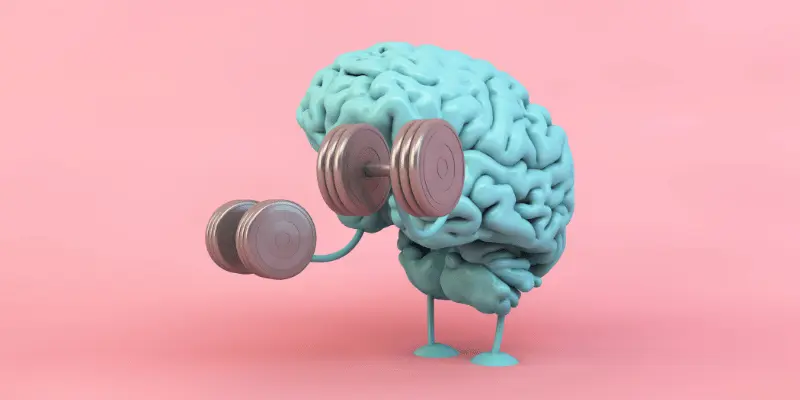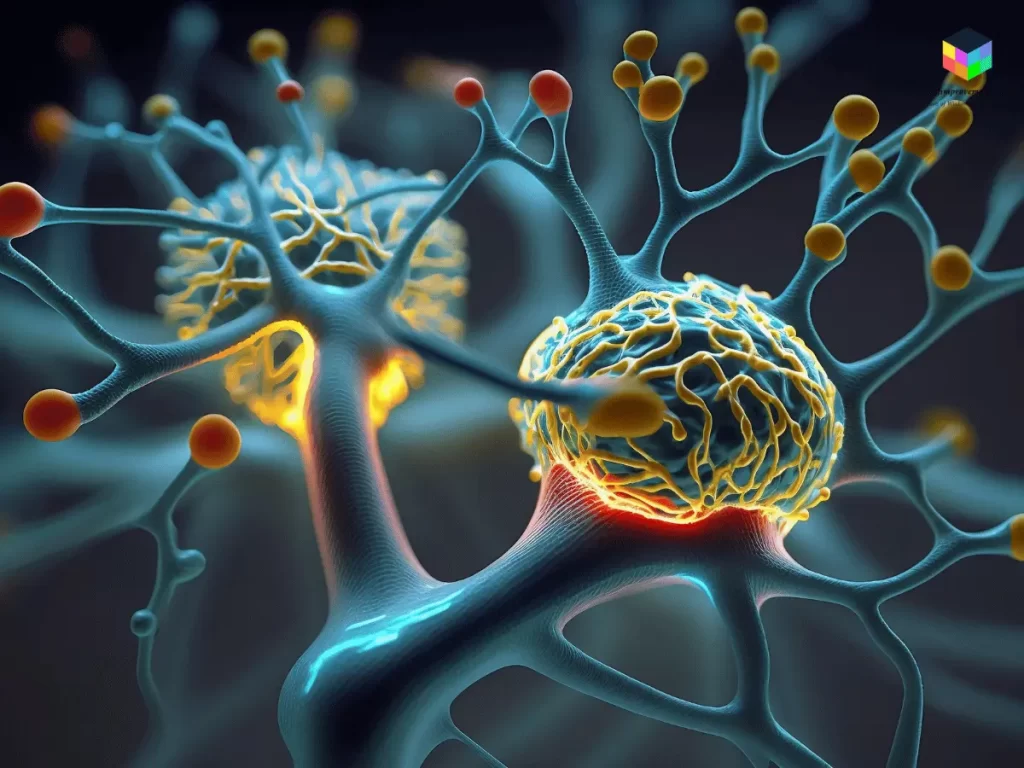Do you have a hard time fighting off anxiety and fear? Do you wish you knew how to feel less anxious? Well, there is good news. Your brain can change and adapt to new information. But you will have to train it. But how do you train your brain to stop fear response?
Discover how your Amygdala Works: Your Brain’s Fear Control Center
Fear is not all bad in itself. A healthy amount of fear is necessary to save your life or protect it against perceived threats. Some of the chemicals that contribute to the “fight or flight” response are also tangled in other good feelings such as pleasure. The secret to this connection is found in the brain.
Understand the Science behind Fear Response
The fear response starts in the brain and spreads to other parts of the human body to make changes for the fight-or-flight response. It particularly starts in the amygdala. This is an almond-shaped set of nuclei that helps to detect the emotional salience of the stimuli.
The amygdala activates whenever we see a human face with an emotion, either that of anger or fear. The sight of a predator also triggers a response to the situation which activates areas involved in preparing for human response. It also triggers stress hormones and the sympathetic nervous system. Thus, the brain becomes alert, the pupil and bronchi dilate and breathing accelerates.
There is a part of the brain that is connected to the amygdala – yes, we call it hippocampus. This part of your brain helps it to interpret the perceived threat. This helps a person know if there is real danger and then make decisions on what to do for survival.
Neuroplasticity – Learn about its remarkable potential
Neuroplasticity is a famous word. It is termed the ability to change and adapt the brain. It has been researched that neuroplasticity helps the brain to change its structure and function. It is an ongoing process that can occur as a result of learning, experience, memory formation or brain damage.
For example, if you have an accident and you lose your ability to speak, your brain can be rewired or retrained to relearn this ability by repairing old pathways or creating new ones.
A few neuroplasticity exercises to train the brain to stop fear response include the following:
- Learning a new language
- Playing or listening to music
- Playing video games
- Making art
- Physical and mindfulness exercises
- Feed your brain with food rich in vitamin D and magnesium
- A short nap during the day can also elevate neuroplasticity
How to Train Your Brain to Stop the Fear Response

Fear is recognized as one of the most powerful emotions. It is powerful enough to cause distressing effects on the mind and body. You could either be afraid of the present or the future. Fear of the future brings anxiety. For some, they experience intense fear of people, animals or situations. This is what we call phobia. Help has arrived. Let’s learn about the effective ways to train the brain to overcome this.
Relief your Anxiety with Mindfulness Meditation
Mindfulness can make you become aware of your fear. It can help you focus on the emotions behind your fears and acknowledge them when they come up without judgment. It can prompt you to take a step back and understand the feelings in order to embrace the fear itself.
Some mindfulness exercises you can try at home include:
- Deep breathing exercises
- Mindful eating and walking
- Mindful meditation
- Coloring and gratitude list
- Yoga and many more
Face your Fears with the help of Exposure Therapy
Slowly increase your exposure to fears. Avoiding fears makes them scary. But the moment you expose yourself to it, they fade away with time. Try not to dodge dangerous situations that make you afraid.
Gradually exposing yourself to fear will make you know if the situation was as bad as you expected or if you were just exaggerating. This way, you will be able to effectively manage your fear and anxiety response.
There’s one thing you can use to rewire your thought patterns: Cognitive Based Therapy
Like neuroplasticity, the CBT is famous. This is because of its usage to help identify and change negative thought patterns. It lays emphasis on facing your fears via exposure treatment. It is effective for people with extreme phobia and social anxiety. With this technique, you can “climb the fear ladder” so to speak, exposing yourself to the object of fear in gradual increments.
Say, for instance, you’re anxious to exercise outdoors because you think people will laugh at you. The CBT will prompt you to challenge that negative thought by asking yourself these questions: what makes you think they will laugh at you? Will they not be so busy with their own activities that they may not even notice you? Do you laugh at those who exercise outdoors?
This approach will help you see that what you fear may not even come to pass. You will even come to realize that most of your fearful thoughts are illogical and baseless. Thus, you are inclined to take action. However, you may need to attend these sessions repeatedly to improve your thoughts and feelings.
Master the Art of Calmness and Serenity: Here are Practical Suggestions

The funny thing is, that even when we have the best plan and intention, things may not go in our favor. No wonder many people experience fear, anxiety, and depression. Well, you can practice these proven suggestions for free. Doing so will train your mind to stop the fear response.
Develop a Resilient Mindset
Instead of dwelling on negative outcomes or on things you cannot control, train your brain to respond positively to obstacles. View obstacles as opportunities for growth and learning. If you encounter a problem, take a pause and break it down into smaller tasks so that you can find practical solutions.
When you shift your perspective from a reactive to a proactive one, you can face difficulties with a calm mindset and experience favorable outcome.
Make use of Habits that Reduce Stress
Prioritize caring for your physical and mental well-being. This is truly essential for maintaining calmness. Get a sufficient amount of sleep (7-9 hours). Do not forget to take short naps during the day. Eat rich foods so you can get vitamins that will help your brain. Move your body around often. Take a breath and relax.
Do not live a boring life. Do things that excite you. It could be your favorite hobbies like singing, writing, dancing or even connecting with people.
You may take these things for granted but they really work. They can help you build resilience and approach certain situations calmly. Furthermore, they can help you deal effectively with the symptoms of anxiety and regulate your brain’s fight-or-flight response. When you do the exercises mentioned above, you inhibit the release of stress hormones and experience calmness.
Seek Professional Support When Needed
At times, your fears can become so serious that they could cause you to develop chronic health issues. You may have tried the strategies mentioned above and it may not work. Remember, you don’t have to face these hard times alone. So it is not wrong if you seek professional support from therapists or neuroscientists who specialize in stress and fear management techniques.
A professional can help you identify what is wrong. He can make you understand the role of your anxious feelings and how it is affecting you. He can also proffer a personalized treatment plan that will help you overcome and reduce stress and feelings of anxiety. He can provide complementary therapies to help you cope.
Seeking a professional can help anxiety levels to drop. They can provide evidence-based treatments that have proven effective to improve your mood and make you have satisfaction in life.
How soon can neuroplasticity help to reduce anxiety?

Yes, it brings relief to know about the brain’s ability to rewire. However, retraining or rewiring the brain may take time. It’s not an overnight or a miracle thing. It’s just like going to the gym for exercise. Just one day of exercising cannot make you lose weight or get into the desired shape. You may need to go for several sessions, for months or even years.
As mentioned by Hidalgo, neuroplasticity is not a sprint. It is a marathon. It is the generation of new brain cells and the strengthening of these new connections. So it is an ongoing process.
For some, it could work for as short as several weeks. For others, it could take months. It takes time to create a new habit and make it stick. So be consistent and keep going. With time, you can unlearn and relearn habits.
Reduce anxiety levels by teaching your brain new things
When you train your brain to learn something new, it can create new neural pathways that support a calmer mindset. Teaching it new things can help your brain rewire itself. Are you muddled about how to get started? Here are a few thoughts to give a shot:
- You can learn a new language: This can improve the density of different types of matter in the brain. For example, the gray matter can become denser when you learn a new language. A denser gray matter helps in improved memory, attention, emotion, and motor function. Learning a new language can also cause structural changes in the white matter of the brain.
- You can learn juggling: Whenever you have spare time, pick up a few small balls and juggle. Frequent juggling can retrain your brain and give you great benefits.
- Make use of the “non-dominant” or “wrong” hand: With much surprise, this can form new pathways. It can also strengthen the connection between your brain cells. Say for instance you write with your right hand. Try writing with your left. Sounds funny, right? But you’re actually treating yourself well if you do so.
- Learn to make art: This can help you see the world in unique ways. If you struggle with anxiety problems, you can use this to express emotions and deeply connect with it. Studies show that making art such as painting or drawing can improve your creative skills and cognitive abilities. If you have no experience with this, no problem. You can improve with much practice.
Why won’t my fear go away and leave me feeling myself again?

An amount of fear can be felt when something scary or unfamiliar happens. That is completely normal and not out of proportion. However, an added bonus would be identifying why you’re afraid. Otherwise, that fear can linger. For some, they are constantly afraid even where there is no trigger. For others, the emotional part of the brain keeps sending danger signals to the body even when they know that their fear is out of proportion. Sometimes, what you need is physical and mental help.
Because of this, you may want to invite the help of an expert or a professional to pick up from where you must have stopped in order to help you tackle your anxious brain.
Identify and become aware of your thoughts
You must first identify the challenge in order to overcome it. So take your mind back and ask yourself: what exactly am I afraid of? Observe your bodily sensations and feelings and take note of them. Bring awareness to your thoughts because thoughts produce emotions. Change your anxious thoughts in order to change your fear. When you see that they are mostly negative, you can then replace them with positive ones.
Neuroplasticity Exercises to Try at Home
Listed below are the list of exercises you can try from the comfort of your home to rewire your brain:
- Mindfulness Meditation
- Physical exercise
- Playing games that challenge the brain such as Sudoku, chess, or crosswords.
- Learning new skills such as gardening, brain teasers, or traveling
Practice Mindfulness
Mindfulness helps you to drive awareness to your present moment and recognize your fear and anxiety. It is a mental process that helps you observe symptoms of fear when they arise. It allows you to observe thoughts without being opinionated or judgmental. It makes you get out of a rut and stop you from doing the things you do when you are afraid.
As a wrap, we have talked about how you train your brain to stop the fear response and you will agree that the wait was worth it. You can retrain your brain if you are patient and consistent. Doing so can prevent you from experiencing cognitive decline and improving your mental health. You should not hesitate to try out the tips and strategies for a happy life.
You Can Reach More: What Are The 8 Key Concepts of Mindfulness
Frequently Asked Questions(Faq’s)
You can learn relaxation techniques to cope with feelings of fear.
Take a moment to breathe and assess the situation. Write down what you’re scared of and seek support from others. It is also vital that you do not avoid the things that scare you.
A small organ in the middle of your brain known as the amygdala is what controls fear response. It does so by sending an alert to the brain which sets your body in motion.
i. accept the fear ii. Identify what you are afraid of iii. Feel the fear iv. Face the fear instead of trying to run away from it v. practice how to overcome it by learning a skill
One of the best ways is learning to stay calm and confront what you are afraid of.
Detect 3 objects and 3 sounds. Then move 3 parts of your body.
Fear could be the result of a threat of harm. It could be physical, emotional, real or even imagined. Fear can be helpful to keep you safe from danger.
The reason for that could be as a result of an anxiety disorder
To some extent, you can. What you need to do is engage in psychotherapy or medications. Lifestyle changes and other coping strategies can also work.



